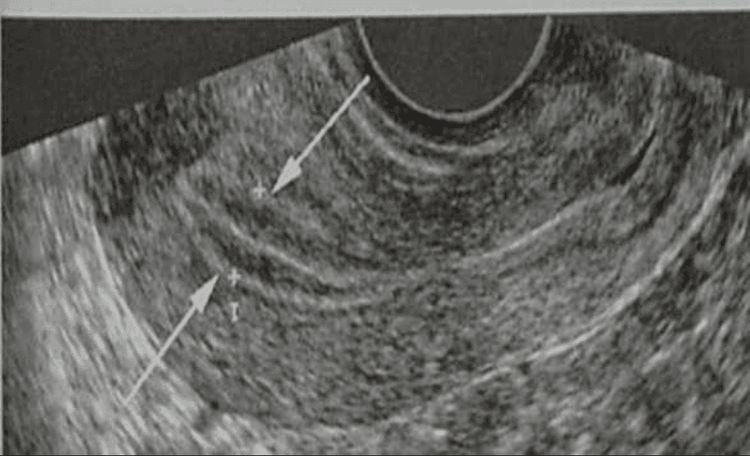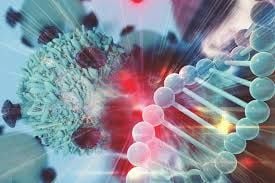This article is professionally consulted by Obstetricians and Gynecologists - Department of Obstetrics and Gynecology - Vinmec International General Hospital, Hai Phong.
Under the influence of sex hormones, the endometrial layer thickens depending on the timing within each month. The thickness of the endometrium is significant for fertilization.
1. Relationship between the endometrium and fertilization
The endometrium, also known as the uterine lining, is a layer of cells that lines the inner surface of the uterus. Under the influence of female hormones, the endometrial tissue varies in thickness throughout the menstrual cycle, with age and during pregnancy. The endometrium plays a critical role in fertilization and gestation.
Throughout the menstrual cycle, influenced by hormones, the endometrium undergoes proliferation, reaching a thickness of approximately 8-12mm around the midpoint of the cycle, coinciding with ovulation. If fertilization occurs during this ovulatory window, the body produces a significant amount of female hormones, causing the endometrium to proliferate robustly, facilitating the implantation of the fertilized egg.
However, in certain instances, insufficient hormonal levels or other factors may result in an endometrium thinner than 8mm, hindering the embryo's ability to attach to the uterine wall, potentially leading to miscarriage. Conversely, an overly thick endometrium may also complicate the fertilization process, potentially resulting in delayed conception.
Towards the end of the menstrual cycle, if fertilization does not occur, a sudden decrease in hormonal levels results in the shedding of the endometrial lining, manifesting as menstruation.
2. At what thickness of the endometrium is fertilization likely?
Before addressing the question of what thickness of the endometrium is conducive to conception, it is essential to understand the fluctuations of the endometrium throughout the menstrual cycle as follows:
- A normal endometrium typically has a thickness of approximately 7-8mm.
- The early phase of the menstrual cycle, following menstruation, represents the thinnest stage of the endometrium at about 3-4 mm.
- During ovulation, the endometrium measures around 8-12mm.
- In the latter half of the cycle, the endometrium can thicken to around 12-16mm.
If menstruation is delayed and the endometrial thickness is between 8-16mm, this is indicative of a likely conception. Therefore, if the thickness of the endometrium is around 13mm and a pregnancy test shows two lines, there is a high probability that conception has occurred, and this thickness is appropriate for fetal development.
In some cases, even if conception has occurred, a thin endometrium (less than 8mm) may challenge the fertilized egg's ability to transport from the fallopian tube (where fertilization occurs) to the uterine cavity for implantation. This could lead to miscarriage or fetal demise.

3. How can the endometrium be improved?
The endometrium can be either excessively thick or excessively thin, both of which can adversely affect the pregnancy process in women. Therefore, when faced with either thick or thin endometrial lining, treatment options may include medication alongside dietary adjustments to enhance the endometrium.
3.1 Thick Endometrium
Generally, individuals with a thick endometrium may be prescribed hormonal treatment to re-establish the balance between estrogen and progesterone in the body, thereby enhancing the likelihood of conception. Additionally, the following measures may be recommended:
- Regular physical exercise to help reduce estrogen levels in the body and maintain a healthy weight.
- Avoidance of late nights; adequate sleep aids in hormonal balance.
- Dietary regimen: Limit intake of soy-based products, foods rich in vitamin C and iron, and foods high in vitamin E.
- Follow-up examinations to monitor the state of the thick endometrium.

3.2 Thin Endometrium
In addition to addressing the primary causes leading to a thin endometrium, lifestyle modifications may include:
- Nutritional adjustments: Increase the intake of iron-rich foods and vitamins C and E. Including soy-based foods is advisable since they contain components similar to estrogen.
- Adequate rest, avoiding late nights.
- Avoiding procedures like dilation and curettage or excessive use of ovulation-inducing medications.
In summary, an endometrial thickness of approximately 8-10mm is considered optimal for conception. However, if the endometrium measures between 8-16mm after the cessation of menstruation, the probability of conception is high. The endometrium is intricately linked to the processes of conception; therefore, if its thickness deviates from the norm, it may impede the implantation and pregnancy process. Any abnormalities in endometrial thickness warrant further evaluation to identify underlying causes and remediate them, thus facilitating a successful conception and pregnancy.
To arrange an appointment, please call HOTLINE or make your reservation directly HERE. You may also download the MyVinmec app to schedule appointments faster and manage your reservations more conveniently.







